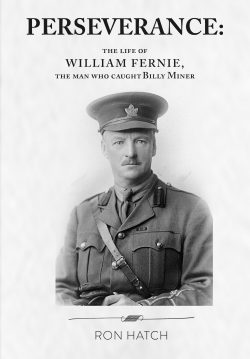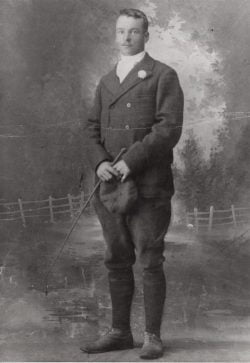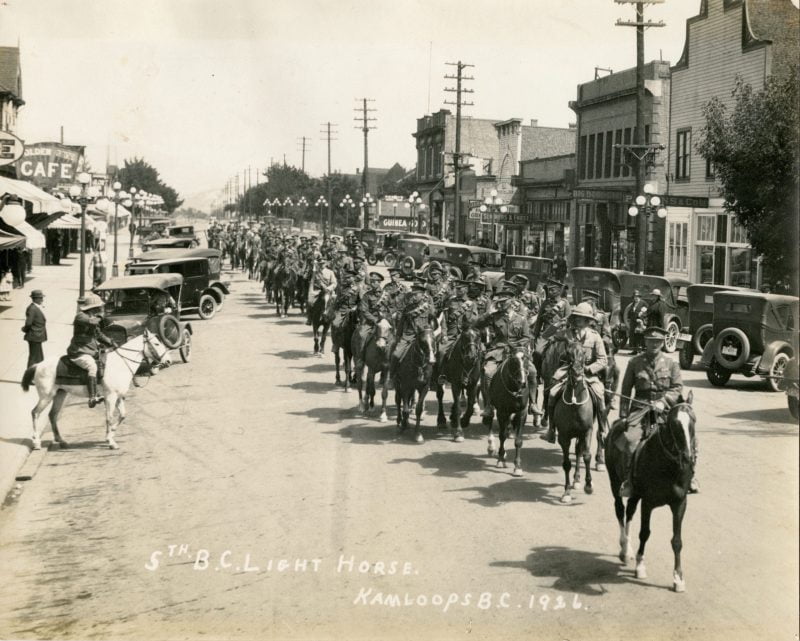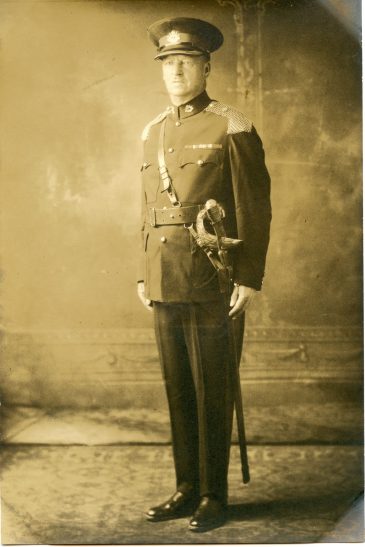#806 The Empire strikes back
Perseverance: The Life of William Fernie, the Man Who Caught Billy Miner
by Ron Hatch
Kamloops: Thompson Rivers History and Historical Society, 2019
$24.95 / 9780991689910
Available by email from trhhs2012@gmail.com, from Kamloops Chapters, and from Amazon.ca
Reviewed by Wayne Norton
*
 Bill Miner attracts a remarkable amount of interest from students of Kamloops history. With the award-winning Interred with their Bones (Tillicum, 2006), Peter Grauer produced the definitive biography of the fundamentally thuggish coach and train robber. Nevertheless, often with tourism in mind, the community at large generally prefers the gentle contours of the benign, fictional image popularised by the film The Grey Fox (1982). A new book by author Ron Hatch, as its title makes clear, continues the local tradition of drawing attention to the famed thief. However, Perseverance: The Life of William Fernie, The Man Who Caught Billy Miner takes the connection between Miner and the man credited with his capture only as its starting point, as it then sets out to focus upon the life and professional career of a distinguished local lawman rather than the notorious local lawbreaker.
Bill Miner attracts a remarkable amount of interest from students of Kamloops history. With the award-winning Interred with their Bones (Tillicum, 2006), Peter Grauer produced the definitive biography of the fundamentally thuggish coach and train robber. Nevertheless, often with tourism in mind, the community at large generally prefers the gentle contours of the benign, fictional image popularised by the film The Grey Fox (1982). A new book by author Ron Hatch, as its title makes clear, continues the local tradition of drawing attention to the famed thief. However, Perseverance: The Life of William Fernie, The Man Who Caught Billy Miner takes the connection between Miner and the man credited with his capture only as its starting point, as it then sets out to focus upon the life and professional career of a distinguished local lawman rather than the notorious local lawbreaker.

Acknowledging his indebtedness to Grauer for the sections about Bill Miner, the author provides an outline of the life of William Fernie using vertical files at the Kamloops Museum, local newspapers, and the Fernie Family Fonds, which have been recently donated to the Kamloops Museum by family members. In addition to his role in the capture of Bill Miner, we learn that Fernie’s tracking skills — always alongside Secwepemc companions — were frequently called upon during his more than thirty years with the British Columbia Provincial Police. He also served overseas during both the Boer War and the Great War, and rose to the rank of lieutenant-colonel in the 5th BC Light Horse. Details of his recreational activities as an amateur sportsman (particularly as an avid polo enthusiast), hunter, and fisherman are also examined.
The Fernie Family Fonds at the Kamloops Museum have provided the author with an excellent selection of photographs to accompany his text, but apparently do not provide much detail to add to the depth of the general outline of the life and career being examined. We do learn that Fernie admired the poetry of Wordsworth and Robert Service, information that provides a welcome glimpse into the character of this man of many abilities and achievements. However, as sources evidently contain little in the way of comparable detail, such glimpses are unfortunately few.

One of the few times we hear Fernie’s voice is when, in the course of suppressing the strike by Great Northern Railway construction workers in 1912, he threatened to shoot any man disobeying his order to disperse. The author gives a good account of the dreadful working conditions that resulted in the strike, but is unable to provide an indication of how Fernie may have felt either about his role or that of the provincial police in suppressing it. We are left to wonder if he was ordered to issue that threat and whether or not he would have acted to carry it out. Nor is there an indication of what Fernie may have thought of being ordered to capture escapees from the Vernon internment camp in 1916, where most internees were held for no crime other than their poverty and national origin.
The absence of such detail has tempted the author into explorations of anything that touched the life of William Fernie. Included in the appendices, we find a general history of polo, an examination of historic buildings in Macclesfield, Cheshire (where Fernie was born), and additional material about Bill Miner. These explorations often take the reader some distance from the biographical narrative. For example, because Fernie took a cruise upon his retirement in 1935, the author provides a history of the ship, the names of notable individuals who were passengers in 1918, details of the ship’s sinking in 1941, the value of gold on board at the time of the sinking, and the amount finally recovered.


Fernie Family collection, Kamloops Museum
More relevant to the life of William Fernie are descriptions of the Kamloops region over the four decades Fernie was resident there. Passages that examine the history of local sports and the military history of the community seem like preliminary examinations of topics that could form the groundwork of more extensive future research. For example, the detailed story of polo in Kamloops is, in its own right, an interesting foray into sports history. Particularly noteworthy are the interspersed sections of text describing the social make-up of a fundamentally conservative society — descriptions that indicate Fernie was very much a man of his time and place, in step with the community in which he lived. Not perhaps the Renaissance man the author claims him to be, but nevertheless deserving of biographical attention.
Bill Miner has cast a long shadow over Kamloops history. Beneath that shadow are many local topics that admittedly lack the glitter and excitement of Miner’s story, but which are very much deserving of attention from those interested in the local past. With Perseverance, Ron Hatch and the Thompson River History and Heritage Society appear to be giving notice of an intention to explore some of those topics. That would be a welcome initiative indeed.
*

Wayne Norton is a writer, publisher, and historical consultant. For many years he was a teacher in Fort Rupert, Kamloops, and England. He has written extensively on a variety of topics including music of the First World War, the history of women’s ice hockey, prairie settlement, public health, and the local histories of Kamloops and Fernie. He was a research consultant for the Indian Residential School Process and has published articles in The Ormsby Review, British Columbia History, BC Studies, The Globe and Mail, and The Vancouver Sun. Wayne Norton’s latest book, Fernie at War (Caitlin Press, 2017), received the Community History award from the BC Historical Federation. Wayne lives in Victoria. [Editor’s note: See Keith Regular’s review of Fernie at War in The Ormsby Review (no. 236, January 21, 2018)].
*
The Ormsby Review. More Books. More Reviews. More Often.
Publisher and Editor: Richard Mackie
The Ormsby Review is a journal service for in-depth coverage of B.C. books and authors. The Advisory Board consists of Jean Barman, Robin Fisher, Cole Harris, Wade Davis, Hugh Johnston, Patricia Roy, David Stouck, and Graeme Wynn. Scholarly Patron: SFU Graduate Liberal Studies. Honorary Patron: Yosef Wosk. Provincial Government Patron since September 2018: Creative BC
“Only connect.” – E.M. Forster


Fernie Family collection, Kamloops Museum

One comment on “#806 The Empire strikes back”